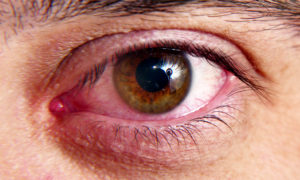By Steve Vargo, OD, MBA 
Mobile technology lets patients reach you at any time and place–and exchange information in new ways. Here are tips to expand your accessibility, while maintaining privacy and boundaries.
Managing the new communication expectations of patients without interfering with your personal life or endangering the patient’s privacy rights is a new challenge. Your patients today can call you or text you at all hours of the day, whether at 8 am or 8 pm or beyond, but that probably doesn’t appeal to you. After all, we all need to disconnect and spend time with our friends and family for at least part of the day. It also is important to establish boundaries with patients even as you try your best to be highly accessible to them.
Patients Expect On-Demand Access to their Doctor
While many doctors still limit their accessibility to office hours, technology has facilitated 24/7 communication. Understandably, some doctors may not be comfortable with this level of accessibility, but I think the ones who are can really differentiate their practice with expanded communication channels and greater accessibility. Knowing that you can contact your doctor with a basic question or concern “after-hours” may be a huge factor in why they choose you as their doctor.
Establish Communication Boundaries
I would not recommend giving your personal phone number to patients. Use a third-party service, or a service that de-identifies your number. Many of the new patient communication systems have text messaging capability built in. Click HERE to learn more about services that de-identify phone numbers.
While instant personal communication might be more important for such practices as a pregnant woman connecting with her OB/GYN or a mother and her child’s pediatrician, emergencies in optometry are rare and personal communication outside of office hours is generally not needed. That said, optometrists can be contacted for emergencies through other methods than text such as an old fashioned doctor’s answering service.
Editor’s Note: Consider setting up a separate number or a special answering service to handle true vision-endangering emergencies. You don’t want those messages slipping through the cracks between minor complaints about eyeglasses and contact lenses.
Mind HIPAA When Using Mobile Communications
Doctors and health care systems must consider security when messaging patients via text. Traditional SMS is not HIPAA compliant. A separate cell phone used only for patient communications does not eliminate the threat of HIPAA violations. Text messages could reside on your mobile device even if you think they are deleted. If the device is lost or stolen, this information could be exposed. A doctor or practice should consider specific services that offer secure or encrypted texting.
A Special Ring Tone on Your Phone to Identify When Patients Are Calling: Not Recommended
There is too much risk for violating the patient’s privacy and exposing you and your practice to legal ramifications when you receive calls on your personal phone, segmented from personal calls just by a different ringtone. A few examples would be a lost or stolen phone that contains health information about a patient, sending a message to the wrong individual if the patient changed their phone number, or someone other than the patient viewing the message (friend, spouse, etc).
Use HIPAA-Compliant E-Mail Systems
It’s important to realize that a text message is not the only written form of communication a doctor can receive via cell phone. HIPAA-compliant e-mail systems via a patient portal can be accessed from the doctor’s phone. Through many of these patient portals, and often through the patient’s own cell phone provider, the patient can send a text message to an e-mail address that is HIPAA-verified. That e-mail is then received in a secure portal, whether on a computer, tablet or smartphone. Alerts of such e-mails can be triggered on the doctor’s phone so emergencies are immediately attended to.
Several of the large EHRs (Epic, RevolutionEHR, NextGen) that cater to hospitals and medical networks offer such an app. Otherwise, Solutionreach’s portal can be accessed via any online browser regardless of device.
Offer Patients a Designated E-Mail Inbox You Check Daily
If you advertise to your patients that they can contact you via e-mail or text with questions or concerns, you should make sure that this account is checked daily. Some of these messages may be urgent, such as a question about a recent eye injury or sudden change in their vision. It may be wise to designate a separate e-mail account that is checked daily by you or your staff. Just make sure your e-mail provider is HIPAA-compliant. A third-party patient portal is recommended because it can legally absolve your practice of blame should a HIPAA violation occur.
Send Follow-Up Communications to Patients
Some dental patient communication systems have the technology to automatically send a follow-up text to each patient who undergoes an invasive procedure, for example, two days after the procedure asking how they’re doing and inviting them to reply with any concerns. A few examples of dental patient communications that do this are Lighthouse 360, which is now a part of Yodle Marketing, and Dentrix, the most popular dental practice management system. Dentrix has its own version of an integrated patient portal add-on that can send automated, procedure-specific messages. The challenge is creating this kind of feature to also include HIPAA compliance, and many of the popular optometry patient communication systems are not there yet.
Mobile healthcare (mHealth) and the ability to remotely monitor and communicate with patients is a burgeoning industry and certain to change not only how doctors monitor chronic disease, but how we communicate with patients. It’s likely that in the next couple years many of these privacy and legal concerns will be resolved.
Manage Patient Communication Expectations: Action Plan
Make sure you have the patient’s permission to communicate with them via text. Most third-party communication systems require patients to “opt-in” to receive text messages.
To avoid HIPAA privacy violations use a service that allows you to send messages that are secure and encrypted. That way you can meet patient expectations for easy communication access without endangering their privacy rights.
Make sure you check and reply to these messages in a timely manner. If possible, set up alerts on your phone.
On-demand access to a healthcare provider can be a huge practice differentiator and patient benefit. Make sure to let patients know you offer this service.
Related ROB Articles
Five Great Apps to Help You Talk to Patients About Eye Health
Doctor-Patient Communication Starters: Keys to Stellar Service
Make the Call: Build a Relationship with Patients Built on Trust
Steve Vargo, OD, MBA, is president of iMobile Communications in St. John, Ind., a company that specializes in mobile communication and marketing for doctors. He is also a consultant for the EyeXam mobile application. Dr. Vargo also is an associate with Vision Quest Eye Clinics, a private practice group in the Chicago suburbs. To contact him:svargo@iMobileCommunications.com.



























